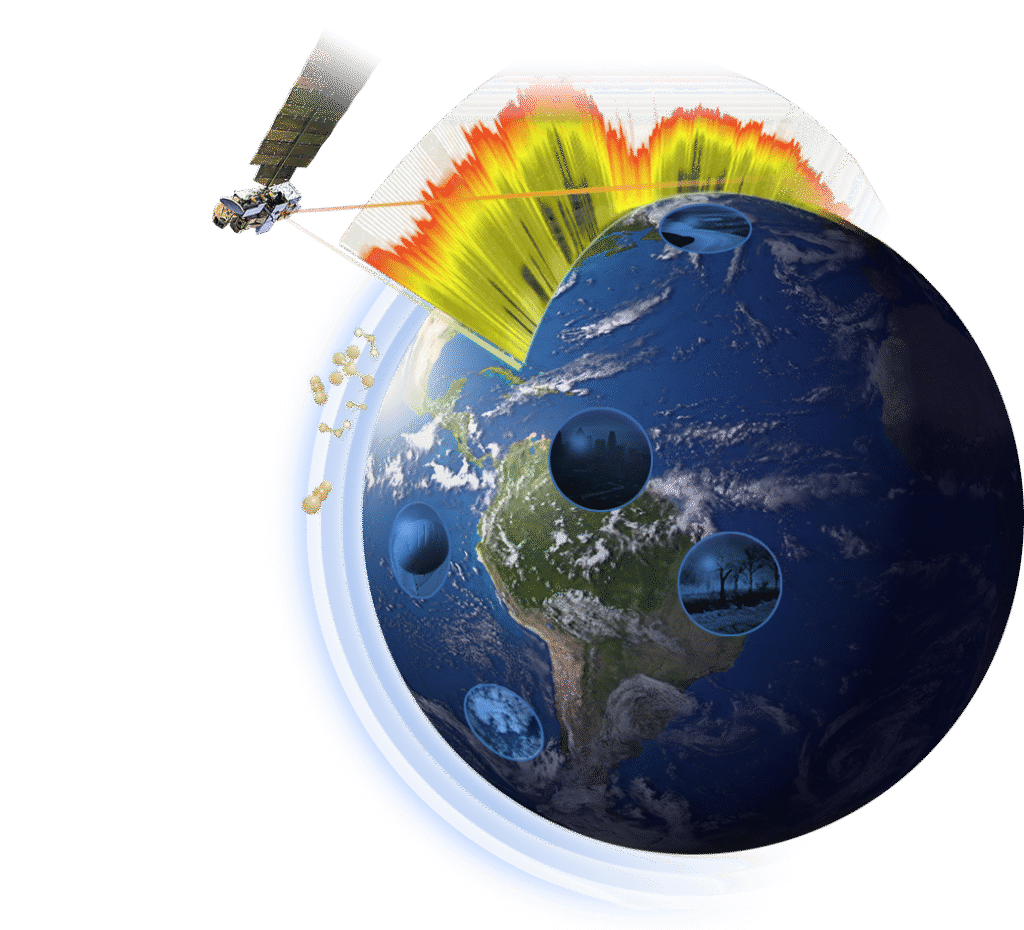The Increased of global warming: Causes, Effects, and Solutions
The ozone layer, a fragile shield of gas located in the Earth’s stratosphere, plays a crucial role in protecting life on Earth. It absorbs the majority of the sun’s harmful ultraviolet (UV) radiation, particularly UV-B rays, which are linked to skin cancer, cataracts, and other health issues, as well as adverse effects on plants and marine ecosystems. However, since the late 20th century, scientists have observed a significant thinning of the ozone layer, especially over Antarctica, leading to global concern. The depletion of the ozone layer has been driven largely by human activity, with far-reaching consequences for the planet. Understanding the causes, impacts, and solutions to this environmental issue is vital for ensuring the long-term sustainability of life on Earth.

Causes of Ozone Layer Depletion due to global warming
The primary cause of ozone layer depletion is the release of man-made chemicals called ozone-depleting substances (ODS). Among these, chlorofluorocarbons (CFCs) have been the most damaging. CFCs were commonly used in refrigeration, air conditioning, foam-blowing agents, and aerosol sprays throughout the mid-20th century. When these substances are released into the atmosphere, they eventually reach the stratosphere, where they are broken down by UV radiation, releasing chlorine atoms. These chlorine atoms then react with ozone (O₃) molecules, breaking them apart and reducing the concentration of ozone.
One chlorine atom can destroy over 100,000 ozone molecules before it is deactivated, making even small amounts of CFCs highly destructive. Other substances such as halons, carbon tetrachloride, and methyl chloroform also contribute to ozone depletion, although their use has decreased significantly due to international regulations.
Another important factor is natural phenomena, such as volcanic eruptions and solar activity, which can temporarily affect ozone levels. However, their impact is minor compared to human-induced emissions.
Ozone Layer Depletion due to global warming
The thinning of the ozone layer has several serious consequences for both human health and the environment. Increased levels of UV-B radiation reaching the Earth’s surface can cause a rise in health issues. For humans, this includes a higher incidence of skin cancers, particularly melanoma, and eye damage, such as cataracts. UV radiation also suppresses the immune system, making people more vulnerable to infectious diseases.
The environmental consequences are equally concerning. UV radiation affects phytoplankton, the base of the ocean food chain, which plays a key role in absorbing carbon dioxide and producing oxygen. A decline in phytoplankton populations can disrupt marine ecosystems and reduce fish stocks. Plants can also suffer from excessive UV radiation, which may impair photosynthesis, reduce crop yields, and affect food security.
Additionally, ozone depletion contributes indirectly to climate change although its interaction with global warming is complex. Some ODS are also potent greenhouse gases, which trap heat in the atmosphere and contribute to global temperature rise due to global warming.

The Ozone Hole Over Antarctica
One of the most visible symbols of ozone depletion is the ozone hole over Antarctica. First observed in the 1980s, the ozone hole forms during the Southern Hemisphere’s spring (August to October) when conditions in the stratosphere are ideal for chlorine and bromine reactions that deplete ozone. Extremely cold temperatures and the presence of polar stratospheric clouds enhance the chemical reactions that destroy ozone. Although the term “ozone hole” refers to an area of significant thinning rather than a complete absence of ozone, the reduction is still severe and poses serious ecological threats to the region.
Global warming: The Montreal Protocol
In response to the growing threat of ozone depletion, the international community took collective action through the Montreal Protocol on Substances that Deplete the Ozone Layer, adopted in 1987. This landmark agreement set targets for the phase-out of ODS, including CFCs, halons, and other harmful chemicals. Over time, the protocol has been strengthened through various amendments and adjustments, including the Kigali Amendment in 2016, which aims to phase down hydrofluorocarbons (HFCs), potent greenhouse gases that replaced many CFCs.
The Montreal Protocol has been widely regarded as one of the most successful environmental treaties in history. Thanks to its implementation, the use of ODS has drastically declined, and recent scientific assessments show that the ozone layer is slowly recovering. According to the World Meteorological Organization (WMO), the ozone layer is on track to return to 1980 levels by the middle of the 21st century if current policies remain in place.
Future Challenges and Solutions
While progress has been made, challenges remain. Illegal production of banned substances still occurs in some regions, and enforcement of regulations must be strengthened. Public awareness and global cooperation remain crucial for maintaining and enhancing the gains achieved so far.
Additionally, efforts to mitigate climate change and reduce emissions of greenhouse gases must go hand-in-hand with ozone protection. Promoting environmentally friendly technologies, improving energy efficiency, and supporting sustainable agriculture can reduce environmental pressures that contribute to both ozone depletion and global warming.
for more detail
Conclusion
Global warming is a critical environmental challenge driven primarily by human activities such as burning fossil fuels, deforestation, and industrial emissions. These actions release greenhouse gases like carbon dioxide and methane into the atmosphere, trapping heat and leading to a gradual increase in Earth’s average temperature.
The consequences of global warming are profound and far-reaching. Rising global temperatures have led to record-breaking heatwaves, with 2024 being the warmest year on record, surpassing the 1.5°C threshold above pre-industrial levels for the first time . This warming accelerates the melting of glaciers and polar ice caps, contributing to rising sea levels that threaten coastal communities and ecosystems. Additionally, the increased frequency and intensity of extreme weather events, such as hurricanes, droughts, and floods, have devastating impacts on agriculture, infrastructure, and human health.
Addressing global warming requires immediate and sustained action. This includes transitioning to renewable energy sources, enhancing energy efficiency, protecting forests, and implementing policies that reduce greenhouse gas emissions. International agreements like the Paris Agreement aim to limit global temperature rise, but current commitments are insufficient to meet the 1.5°C target .
In conclusion, global warming is an urgent issue that demands collective global efforts. By taking decisive actions now, we can mitigate its impacts and work towards a sustainable and resilient future for all.